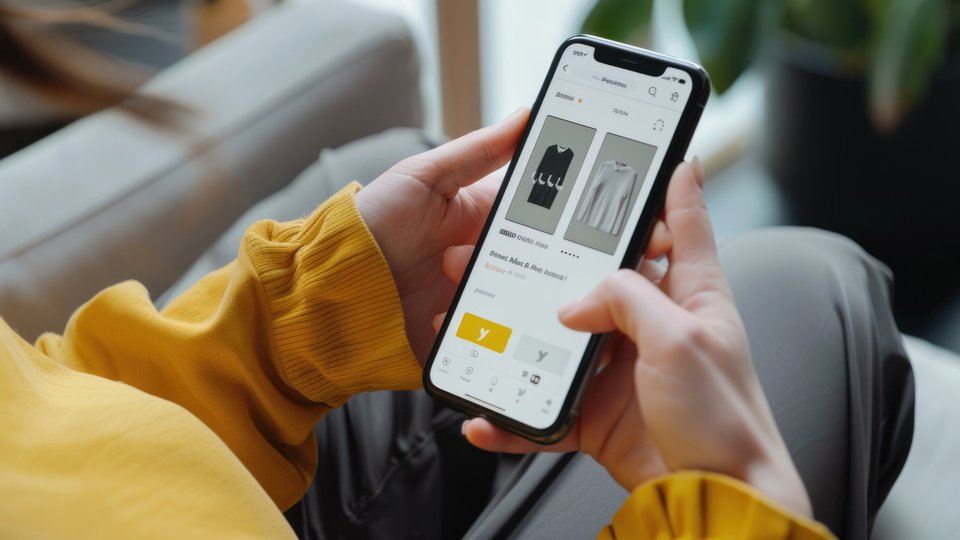Marketing
Why customer messaging is the gift of the holiday season for retailers
Personalized and owned communications makes the shopping experience not just transactional but a relationship-building exercise between brand and consumer.

November 22, 2024 by John Kim — Co-Founder and CEO, Sendbird
Wow, wasn't September just a few weeks ago? Now, checking my calendar, it's clear the busiest season is upon us — Halloween, Thanksgiving, Winter break, gifting, travel, and yes, Mariah Carey. Consumers are swept up in the frenzy of the holiday rush, with Black Friday, Cyber Monday, and the final countdown to the holidays around the corner.
But for retail leaders, this isn't just a busy season — it's a pivotal moment. The stakes get higher year after year. Consumers are not just shopping more but expecting more. The pressure to deliver seamless, personalized experiences is greater than ever.
While traditional marketing tactics might drive traffic to your site or app, what truly counts is what happens next. How do you keep those customers engaged? How do you ensure they complete their purchase and return for more? Becoming customer-obsessed is not a nice to have; it's essential for driving meaningful customer growth. In fact, Forrester found customer-obsessed organizations reported 41% faster revenue growth, 49% faster profit growth and 51% better customer retention.
Customer engagement is an imperative. The worst thing that a customer can experience this holiday season is friction. This is where in-app and on-(web)site customer messaging becomes a game-changer, capitalizing on these critical moments and turning seasonal shoppers into long-term customers via personalized communications. Here's how you can use these tools to meet and exceed your holiday goals.
Guide customers with a personalized AI agent
Shoppers fall into a few categories when they first visit a site or app: they're just browsing, know what they want, or have no idea where to start — and there's usually a deadline. Understanding from the start a customer's intent and the context with which they're visiting can lead to a seamless and enjoyable shopping experience for both the customer and brand. With owned communications tools, like an employee at a brick-and-mortar store, you can immediately greet customers, ask what they need help with, and offer recommendations.
As a customer browses for holiday gifts, the in-app or online messaging experience can be super powered with an artificial intelligence agent or assistant, who can suggest products, highlight special offers, or answer specific questions in real time, with high accuracy. McKinsey reports that personalized recommendations can lead to a 10% to 30% increase in marketing-spend efficiency, and up to 15% higher conversion rates.
Provide instant gratification with real-time support
Of course this isn't a catch-all. Often, customers will have questions or concerns outside of the shopping experience. Maybe they want to know the status of an item that appears to be out of stock, or they are having issues with placing an order or tracking a transaction. This is where real-time support shines.
The ability to provide immediate, real-time customer support can be a major differentiator during the hectic holiday season. Imagine a rushed customer needing something potentially simple to figure out but instead of immediate support, they go to a competitor's site because they don't want to send and wait for a response from an email.
Shoppers expect quick responses to their inquiries, whether about product details, order status, delivery times, or returns. In-app and online messaging enables you to deliver instant answers, resolving issues before they escalate into frustration or cart abandonment. Deploying this tool shows your commitment to customer satisfaction and builds trust, turning potentially negative experiences into positive ones. Also, there's a clear market for such tools, given that eight in 10 consumers surveyed by the IBM Institute for Business Value said they would like to use AI to help research products. Consumers also expressed interest in using AI to find deals (79%) and solve issues (82%).
Cut through the noise with targeted marketing
The holiday season brings a lot of noise to consumers' email and text inboxes, making it a challenge for your messages to stand out. That changes with in-app and push notifications, which deliver your content directly to your customer. Plus, it's a safer way of communicating, compared to email and SMS, which is easily susceptible to scams and spam messaging.
This targeted approach ensures higher visibility and engagement compared to traditional channels. By sending timely and relevant offers based on individual preferences and browsing history, you capture customer attention and drive them towards a purchase.
Build trust with transparent post-purchase communication
You made a sale! That's great. Think of that as the beginning of the next phase of your relationship with your customers, not the end. Messaging shouldn't end after checkout. It's a crucial tool for providing real-time updates on shipping, delivery and returns.
This transparency fosters trust and reduces customer anxiety, especially during the holiday rush when timely delivery is paramount. Proactive communication about order status minimizes the need for customer service inquiries, streamlining operations and enhancing the overall customer experience.
Change it up this season
There's nothing more memorable than someone speaking directly to you. Personalized and owned communications makes the shopping experience not just transactional but a relationship-building exercise between brand and consumer.
These tools elevate the customer experience, which inspires loyalty and generates recurring growth. This investment pays back in more ways than the revenue you're counting on this season. Maybe you'll even see the same folks — and some of their friends — throughout next year.
About John Kim
John S. Kim is the Co-Founder and CEO of Sendbird (YC W16), the customer communications platform powering 4,000 of the world's most popular digital applications. 7 billion messages sent and received between over 320 million people every month are routed using Sendbird, whose customers include DoorDash, Match Group, Virgin Mobile, Noom and Paytm. The company has raised $220 million USD to-date, backed by reputable investors including ICONIQ Capital, SoftBank Vision Fund, Shasta Ventures, Y Combinator and more.
